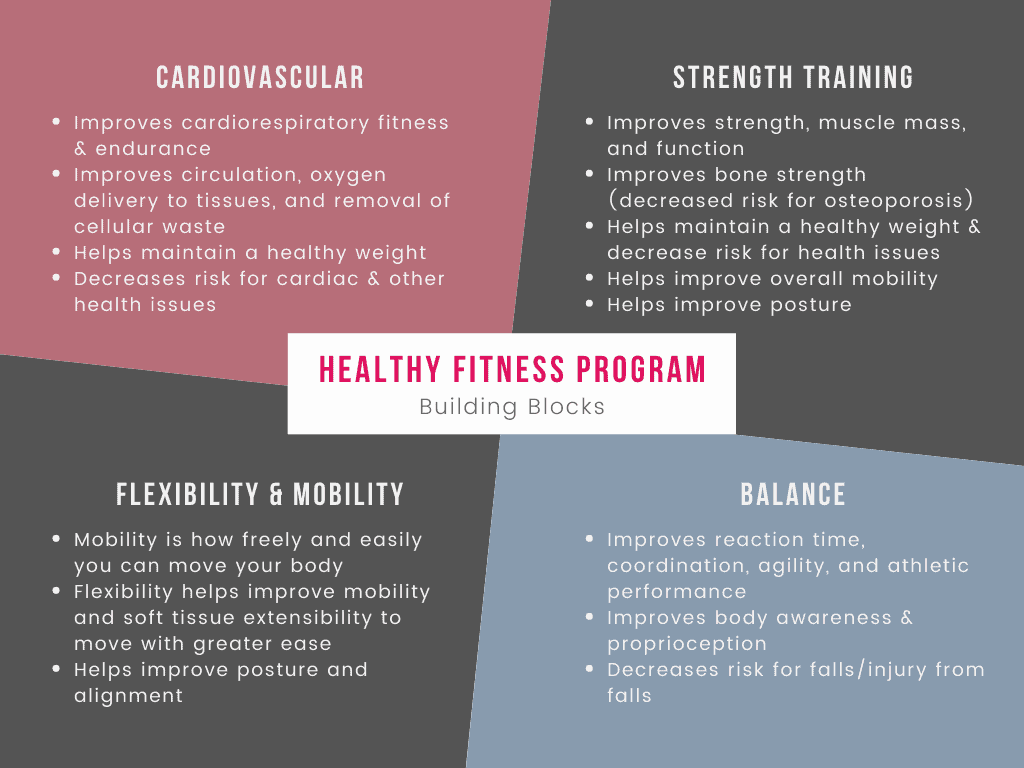
Are you practicing these four aspects of exercise weekly: cardio, flexibility, agility, and strength? Swami Mukundananda discusses this in detail in his book Golden Rules for Living Your Best Life. You may practice the first three aspects, but there may be more you can do to elevate your strength training for maximum benefit. I used to dislike strength training, but I was hooked once I saw how it transformed my body! I feel strong, my bones are healthy, and I am less prone to injury.
What is Strength Training?
Strength training is more than lifting weights. It focuses on improving muscular strength, endurance, agility, and power. It involves using resistance to challenge the muscles, such as free weights, machines, resistance bands, and body weight, or other objects like sandbags, backpacks, kettlebells, or sleds.
Strength training exercises are designed to target specific muscle groups or multiple muscle groups simultaneously. The main goals are increasing muscle mass, improving overall strength and power, enhancing athletic performance, and promoting better bone health and joint function while slowing or restoring bone loss.
Strength training can be adapted to various fitness levels and goals, so it suits all ages and abilities. It is easily incorporated into any fitness program to improve athleticism, fitness, and overall health and well-being. Muscle mass decreases with age, causing increased body fat, muscle weakness, susceptibility to injury, and immobility. You can lose 3% to 8% of muscle per decade if you remain inactive. Swami Mukundananda says to use it or lose it!
Make Time for Daily Exercise
How do we do it?
As with any exercise regimen, consult a doctor to ensure strength training is right for you based on your health status. Once you have the green light, start by incorporating the concept of progressive overload, where you gradually increase the intensity, reps, or amount of weight used over time. Next, execute each movement with the correct posture and technique to avoid injury and ensure you engage the targeted muscles. Rest and recovery are as important as the exercises, so avoid over-training and allow the muscles to repair and ultimately grow stronger. Varying the exercises helps minimize repetitive use injuries, plateaus in progress, and boredom. Consistency is key to producing optimal results, so create a regimen and update it periodically. Examples of strength training include:
- Squats
- Deadlifts
- Dumbbell Bench Presses
- Dumbbell Rows
- Push-ups
- Pull-ups
- Lunges
- Dumbbell Shoulder Presses
- Planks
- Russian Twists
Check out: Strength Training at Home: Workouts With and Without Equipment and LiveStrong Strength Training How To Videos
Benefits of Strength Training
The primary benefit of strength training is weight management, which reduces body fat, as lean muscle mass can increase metabolism and burn calories while exercising or at rest. Also, Cardiometabolic health is improved, which helps prevent common chronic diseases such as hypertension, diabetes, obesity, kidney disease, non-alcoholic fatty liver disease, and the number one killer of the adult population worldwide, cardiovascular disease. Strength training has a positive impact on mental health by reducing depression and anxiety and improving sleep quality and duration. It accelerates the production of endorphins and reduces the stress hormone cortisol. In addition to losing muscle mass with age, you also lose bone density. Strength training can increase it, thus reducing the risk of osteoporosis and fractures.
Other benefits of strength training include better joint health because the muscles surrounding the joints are stronger and can improve joint mobility and stability. As you grow stronger, your ability to perform daily tasks improves. If you are looking for a performance booster to enhance power, speed, and agility, then strengthening your muscles will achieve that goal. By being consistent, you can increase and sustain your confidence and self-esteem.
Concerns and Considerations
It is easy to assume that age, gender, or health issues exclude you from strength training. However, do not be discouraged. A great inspiring example is Ernestine Shepherd, an 87-year-old former bodybuilder. She didn’t start until she was 56 and held the Guinness Book of World Records as the oldest female bodybuilder at age 74 and 75! She continues to teach fitness as she approaches her 90’s. If you suffer from ailments like multiple sclerosis, back pain, Parkinson’s, heart disease, COPD, or type 2 diabetes, you can still practice strength training. Improving your muscle structure can minimize the effects of many chronic diseases.
Another concern is that strength training will cause you to appear bulky. Building muscle is a long, slow process that requires dedication and consistency. The physiques seen in magazines require years of work and extraordinary effort. Testosterone production is the main component of muscle production, as is high-calorie consumption and protein. For the average person, strength training will accelerate body fat loss and leave a toned, not bulky appearance. High repetitions and more sets with smaller weights will avoid excessive muscle stacking seen in low reps and larger weights.
Nutritional Tips
What should you eat to maximize the benefits of strength training? Protein is an important component of efficient muscle repair and growth. Incorporate various protein-rich foods, whether carnivore or vegetarian, such as lean meats, fish, poultry, eggs, dairy products, legumes, and tofu. In addition to protein, a balanced diet of complex carbohydrates like whole grains, fruits, vegetables, and legumes is excellent for sustaining energy. Healthy fats such as nuts, seeds, olive oil, and avocados vitamins regulate hormones and cell function. Before you work out, try to consume a meal or snack containing carbohydrates and protein 1-3 hours before the session. Consume a meal or snack with carbs and protein 30-60 minutes after the session to restore glycogen levels and support muscle recovery.
Hydration is another important aspect of any exercise regimen, and it should be done before, during, and after our workouts. Water is best in most cases, but consider drinks with electrolytes if you engage in intense or prolonged exercises. Plan the timing of food and water intake so you can sustain your energy and minimize cramping, dizziness, and other symptoms of malnourishment and dehydration. Also, be mindful of the portions consumed to avoid weight gain. Although your appetite may increase due to regular exercise (calories in/calories out), be mindful of total consumption. Try to avoid food rewards that could affect progress. Finally, be consistent with training, nutrition, and hydration; you will achieve the desired results.

Cardio vs. Strength Training
Many people ask which is better, cardio exercise or strength training. The answer is – both! As mentioned before, it is best to incorporate cardio, flexibility, agility, and strength exercises into your weekly routine. Try to alternate workouts throughout the week to avoid overuse of muscles and maximize fitness levels. Cardio improves heart health, reduces body fat, lowers blood pressure, increases energy, and improves mental function. Strength training builds muscle, burns calories after the workout, strengthens bones, prevents injuries, and improves cardiovascular efficiency. They are complementary approaches, but if you are doing both on the same day, do cardio first to improve endurance and do strength training first to build muscle strength based on your overall fitness goals.
FAQ: Strength Training
What is Strength Training?
Strength training is a form of exercise that causes muscles to contract due to outside resistance, such as free weights, machines, resistance bands, and body weight. It is an essential aspect of overall physical health.
Should women strength train?
Absolutely! Strength training is not just for men. Its benefits, such as weight loss, bone strength, disease prevention, and improved mental health, are good for everyone.
I am an older adult. Is strength training safe?
It is never too late to start strength training. As with any exercise, consult your physician to see what is right for you and your situation.
Can I do strength training at home?
Yes. You can buy dumbbells, ankle weights, resistance bands, and kettlebells at your local superstore or sporting goods outlet. You can also use household items such as water bottles, backpacks, soup cans, or your own body weight to do strength training. No gym membership is required!

